Recent Posts
We are Cleaning Experts
3/18/2020 (Permalink)
SERVPRO is Here to Help during this time of need
During this unprecedented time caused by the global pandemic of coronavirus, this is a reminder to our customers that we are specialists in cleaning services, and we adhere to the highest cleaning and sanitation standards.
Specialized Training
We are prepared to clean and disinfect your home or business, according to guidelines set forth by the Federal Government. We have years of experience in dealing with biological contaminants, and we will go beyond the scope of work that regular janitorial staff perform on a daily basis. The Public Health Agency of Canada (PHAC) encourages cleaning of high-touch surfaces in all public spaces. Examples would include counters, tabletops, doorknobs, light switches, bathroom fixtures, toilets, phones, keyboards, tablets and tables. Other spaces likely to fall under the PHAC’s guidance for commercial spaces include:
• Kitchen/Food Areas
• Bathrooms
• Schools/Classrooms
• Offices
• Retail Spaces
• Water Fountains
• Shelving/Racks
• Sales Counters
• Carpets and Rugs
• Stair Handrails
• Elevator Cars
• Playground Equipment
• Fitness Equipment
Specialized Products
The Government of Canada recommends usage of a labeled hospital-grade disinfectants with claims against similar pathogens to the coronavirus. Multiple products available to SERVPRO carry this approved emerging pathogens claim. While there is currently no product tested against this particular strain of the coronavirus, we are following all guidelines as provided by the Federal Government and provincial/local authorities.
Call Today for a Proactive Cleaning
If your home or business needs deep cleaning services, call the experts today – [SERVPRO of Calgary South, 403-255-0202]
Get your Home Hibernation Ready
12/1/2019 (Permalink)
 Make sure you are ready for our cruel winters.
Make sure you are ready for our cruel winters.
The first snowfall may have already come (and hopefully gone) but it’s not too late to prepare your home for Winter.
Living in Alberta, or anywhere else for that matter, where the weather changes quickly, we know how cold and miserable it can get both inside and outside our homes. Preparing for winter while it’s happening is stressful and difficult – it’s a much better idea to be prepared in advance with these tips to get your home and family ready for the cold winter ahead.
Clean out your garage
Like your traditional spring cleaning, consider scheduling a traditional 'fall cleaning' of your garage. Organize the remains of your summer projects and clean and store gardening tools. Like a seasonal turning of your closet, push what you won't need any longer like your lawn-mower, hedge trimmer, rakes and summer toys to the back and bring any winter necessities like: shovels, snow blowers, skis and sleds to the front. Set out salt and gravel containers, and you'll thank yourself when the snow arrives.
Cut the water
Pipes can freeze and rupture in the coldest temperatures, and this can cause external and internal damage to the home. To prevent this problem, turn off the water to all external spigots and then drain the hoses. Homes with an exterior sprinkler system should also hire a professional to blow out your system so it can be closed down for the season.
Prepare your hearth Santa & Fires
Homes with a working chimney tend to rely on it heavily during the colder months, and this makes routine service during the fall essential. A clean chimney not only reduces the risk of a fire hazard, but it also eliminates harmful toxins from lingering in the air
Your furnace needs an annual checkup
Is your heating system ready to weather the winter? Have a professional check your heating system and ensure it's in good working order before you turn it on. Schedule checks for your furnace and venting system. Don't forget to replace the batteries in smoke and carbon monoxide detectors, in case any of your heating systems are overworking.
Pad your pipes
A small frozen pipe can cause big household damage if it bursts, so pad your pipes to prevent floods. Grab some tubular pipe insulation sleeves from your local hardware store and set to task covering exposed pipes in unheated areas, such as a basement, attic, crawl space or cabinet. The pipe sleeves are easy to apply and can be cut to fit. Cover all exposed parts, including bends and joints. Finally, seal the seams with duct tape. With that simple task, you're not only preventing considerable water damage, but also conserving energy.
Get your Calgary Business Ready for Winter
11/1/2019 (Permalink)
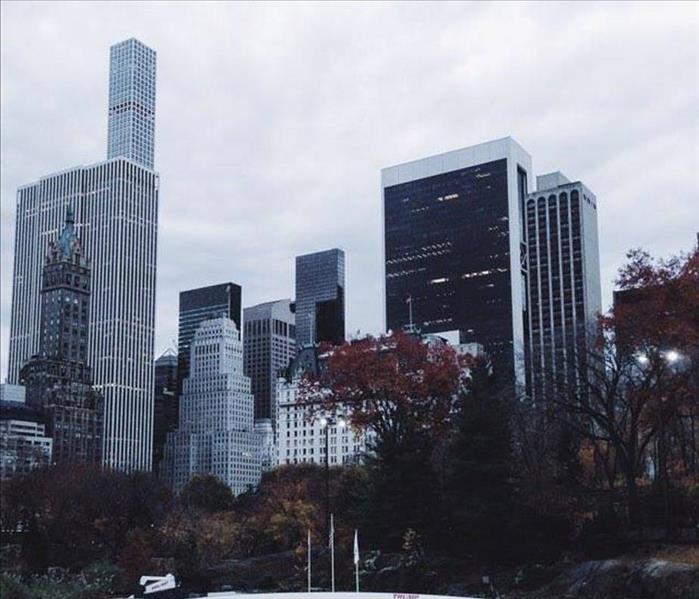 Take extra care of your business during the winter months. One small incident can cause a lot of damage and down time.
Take extra care of your business during the winter months. One small incident can cause a lot of damage and down time.
The winter months may call for businesses to take some standard precautionary measures to help protect their property. These measures include basic maintenance checks and preparation to help ensure your business and employees remain safe. Some basic precautionary tips include:
- Check your business property for down tree limbs and branches. Weather, such as wind, heavy rain, ice and snow, can cause branches to fall, which could cause damage to the property and potentially cause personal injuries.
- Ensure gutters are clean and secure. Leave or debris accumulates causing a damming effect on gutters, which could lead to roof problems and water damage.
- Inspect property, especially walkaways and parking lots, for proper drainage to alleviate flood hazard potential.
- Inspect all handrails, stairwells and entryways to address and correct potential slippery or hazardous areas. Install mats or non- slip surfaces and post caution signs where water could be present.
Get your Calgary Home Ready for Winter
11/1/2019 (Permalink)
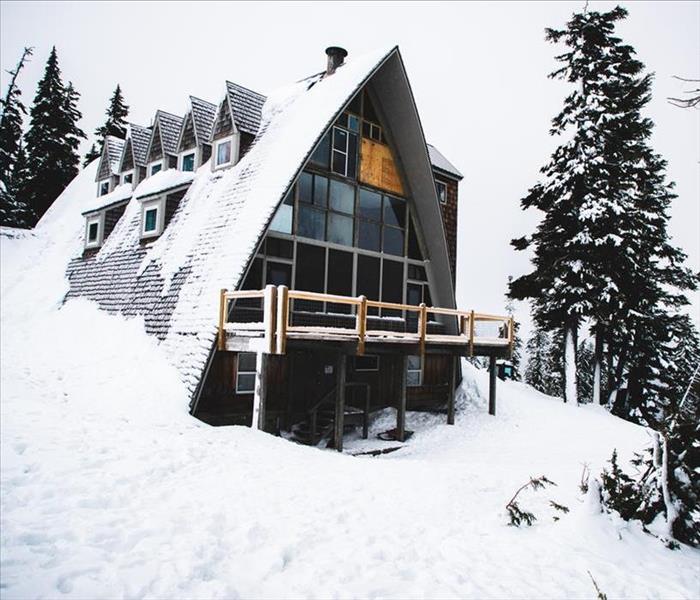 Proper home maintenance can help you and your house escape the winter unscathed
Proper home maintenance can help you and your house escape the winter unscathed
Keep Your Home Safe!
Since the severe weather has made an appearance across the country, it's only right if I give you Awesome Tips on keeping your home and business safe!
Tips for Preparing Your Home for Winter Weather
- Keep cabinet doors open during cold snaps. This allows warm air to circulate around pipes
- Keep a slow trickle of water flowing through faucets, especially if the pipes for faucets, especially if the pipes for faucets run through unheated or non-insulated areas of your home.
- Consider shutting off outdoor faucets. Find the shut-off valve in the basement or crawl space and turn it to "off".
- If you follow the previous step, then open the outdoor faucet to help ensure it drains completely and the inner valve is shut off.
- Ensure gutters are clean and secure. Leaves and debris accumulate, causing a damming effect on gutters, which could lead to roof problems and water damage.
Proper maintenance of your furnace can help reduce the risk of puff backs.
Fall Home Maintenance Musts
10/11/2019 (Permalink)
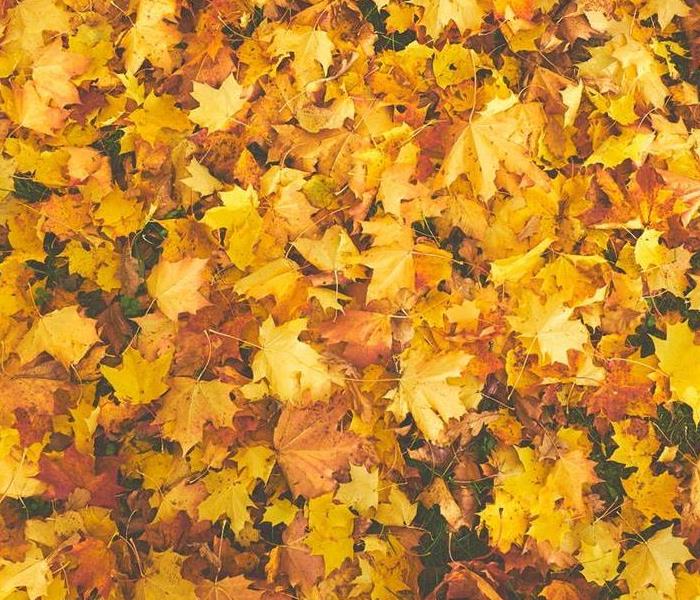 Fall home maintenance tips to keep your property in great shape
Fall home maintenance tips to keep your property in great shape
Fall Home Maintenance Musts
Clean the Gutters
After leaves have fallen, clean out the gutters and downspouts, flush them with water, inspect joints, and tighten brackets if necessary. Clogged gutters are one of the major causes of ice dams. Replace old or damaged gutters with new ones that have built-in leaf guards for easier future maintenance.
Caulk Windows
Be sure to caulk around windows and doorframes to prevent heat from escaping. “Caulking and sealing openings is one of the least expensive maintenance jobs,” says Michael Hydeck, Hydeck Design Build, Inc. “Openings in the structure can cause water to get in and freeze, resulting in cracks and mold buildup,” he says.
Inspect the Roof
Make sure the roof is in good shape. Inspect for missing and loose shingles. "Ice, rain, snow, and wind combined with rapidly changing temperatures and humidity wreak havoc on roofs," says Jay Butch, Director, Contractor programs for CertainTeed Roofing. "Your roof is your first defense in protecting your home. It’s better to proactively deal with repairs in the fall than to discover a leaky roof during a snowstorm."
Ready the Fireplace
Have your heating system checked by a licensed heating contractor. Heating systems will use fuel more efficiently, last longer, and have fewer problems if properly serviced. Get your wood stove and fireplace in working order. Gary Webster, Creative Director of Travis Industries, suggests that you examine your wood stove or fireplace insert’s door gasket for a tight seal.
When Storms or Floods hit, SERVPRO of Calgary South is ready!
8/21/2019 (Permalink)
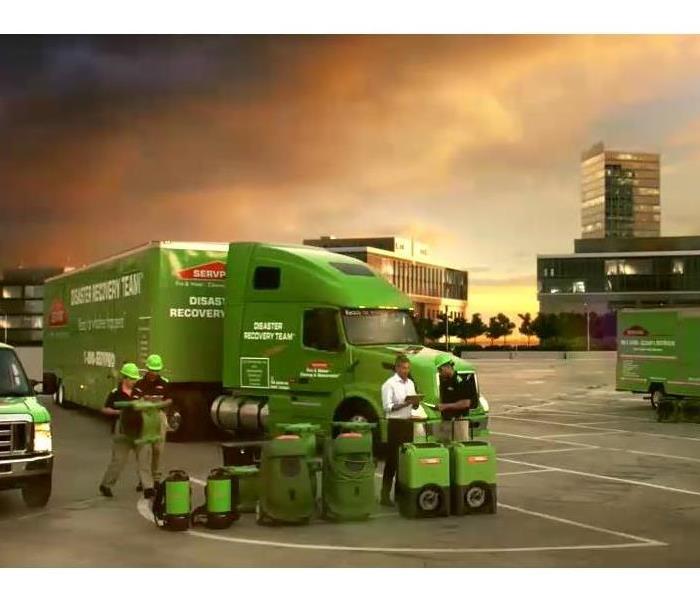 Our highly trained crews are ready to respond 24/7 to storm or flood damage in Calgary and surrounding areas.
Our highly trained crews are ready to respond 24/7 to storm or flood damage in Calgary and surrounding areas.
SERVPRO of Calgary South specializes in storm and flood damage restoration. Our crews are highly trained and we use specialized equipment to restore your property to its pre-storm condition.
Faster Response
Since we are locally owned and operated, we are able to respond quicker with the right resources, which is extremely important. A fast response lessens the damage, limits further damage, and reduces the restoration cost.
Resources to Handle Floods and Storms
When storms hit Calgary, we can scale our resources to handle a large storm or flooding disaster. We can access equipment and personnel from a network of 1,700 Franchises across North America and elite Disaster Recovery Teams that are strategically located throughout the Country.
Have Storm or Flood Damage? Call Us Today 403-255-0202.
Calgary Business Fire Awareness Tips
6/27/2019 (Permalink)
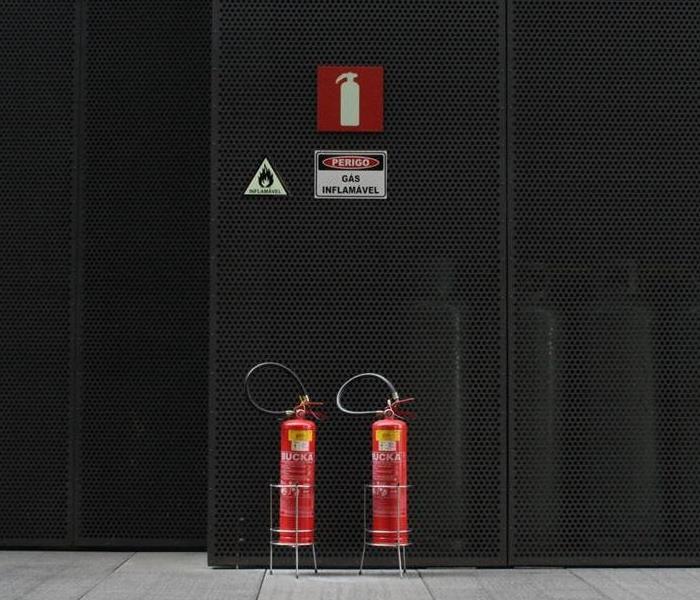 Commercial building fire safety tips
Commercial building fire safety tips
Here are a few fire-safety tips focused on keeping the workplace safe.
- Keep your workplace clean and organized. Mess contributes to fires by providing more fuel to the flames and by limiting access to exits and emergency equipment.
- Place all oily/chemical covered rags in a seal-able metal container. Dispose of this waste on a regular basis.
- Keep machinery on an appropriate maintenance schedule and keep to it, to prevent overheating and sparks.
- Report all electrical hazards immediately faulty wiring is a common cause of fires along with and malfunctioning electrical equipment. Never attempt electrical repairs unless you are qualified and authorized.
- Have easy access to all electrical control panels. Clutter and equipment stored in front of the panels slow down your ability to shut down the power in emergencies.
- Use and store chemicals safely. Read the label and the Material Safety Data Sheet (MSDS) to determine if the substances are flammable or hazardous in any way. Provide proper ventilation when using and storing these substances.
- Smoke only in designated areas and extinguish smoking materials safely and thoroughly. Never smoke in storerooms or chemical storage areas. Never exposes areas containing chemicals to open flames of any variety.
- Never block sprinklers, firefighting equipment, or emergency exits.
- Have an emergency information list near telephones. The list should include emergency numbers, company address, and fire evacuation plans.
- Learn the location of all fire extinguishers and how to properly use them.
The Basic Categories of Water
6/25/2019 (Permalink)
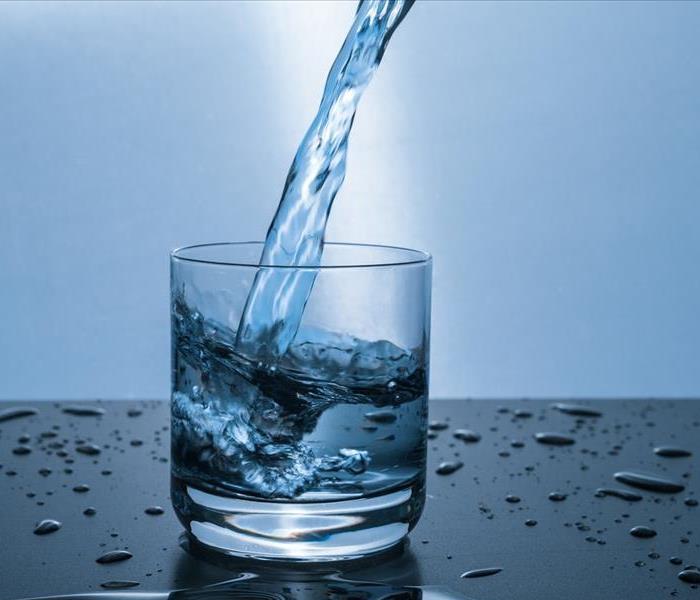 The 3 basic categories of water help explain the severity of a water damage situation.
The 3 basic categories of water help explain the severity of a water damage situation.
The 3 Basic Categories of Water
Category 1: White/Clean Water
The water stems from a clean source and poses no substantial risk from contact, ingestion, or inhalation. However, it can develop in another category if it comes into contact with other surfaces or materials. Typically, Category 1 water will evolve into Category 2 after 24 hours if left untreated.
Category 2: Grey Water
Grey water is contaminated water that doesn’t contain sewage. It may still contain some contaminates and has the potential to cause illness if contacted or ingested. It may contain potentially dangerous levels of microorganisms or nutrients for microorganisms, as well as other organic or inorganic matter (chemical or biological). Grey water can arise from sources such as a sink, washing machine, or the shower. Grey water can be used on your lawn or garden but if left unattended for 48 hours it can become Category 3.
Category 3: Black Water
Black water contains sewage or has encountered fecal matter. It is grossly contaminated and may contain pathogenic bacteria or other harmful agents. Such water sources may carry silt, organic matter, pesticides, metals, or toxic organic substances.
Time and temperature can also affect the quality of water and change its category.
*Refer to the IICRC S500 for complete definitions.
SERVPRO of Calgary South is equipped and ready to handle any water situation. Please call anytime 403-255-0202
Tips for Heavy Rainfall in Calgary
6/23/2019 (Permalink)
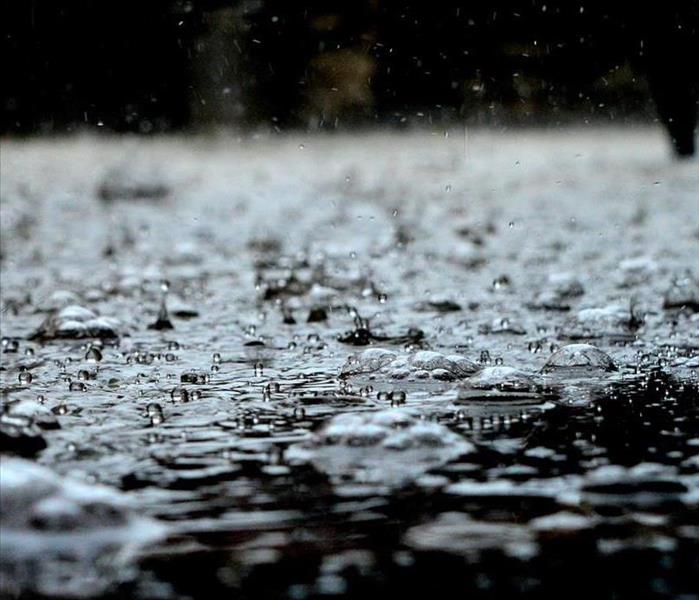 Here are a few tips to handle the increasing frequency of heavy rain storms in Calgary
Here are a few tips to handle the increasing frequency of heavy rain storms in Calgary
The number of severe storms and natural disasters in Canada has been increasing at a dramatic rate over the past few years. Heavy rainfall can cause damage to your property, here are a few tips to get you through the season with hopefully minimal damage.
Home and Business Tips
- Look into purchasing flood insurance. Call your insurance agent make sure flood insurance is right for you.
- Install rain gutters and other drainage systems. Clean out rain gutters frequently, proper water flow will direct water away from your property.
- Fix any leaks ASAP, a small leak can quickly turn into something greater.
- Extra roof protection. You can spend a bit more to install a rubber roof underlay, a waterproof barrier that goes under the shingles and protects the roof from water intrusion. This will also help with insulation in the wintertime.
Rainy Driving Tips
- Don’t use cruise control. This feature works great in dry conditions, but when used in wet conditions, the chance of losing control of the vehicle can increase, as you will have less control over the vehicle.
- Slow down and leave room in front of you. Slowing down during wet weather driving can be critical to reducing a car’s chance of hydroplaning, when the tires rise up on a film of water.
- Posted speed limits are the recommended speed during ideal conditions. Do not feel pressured to drive at the posted limit during a rainstorm, but do not drive too slowly either. As other drivers may have to make dangerous maneuvers to avoid you.
Alberta Wildfires - What you should know
6/23/2019 (Permalink)
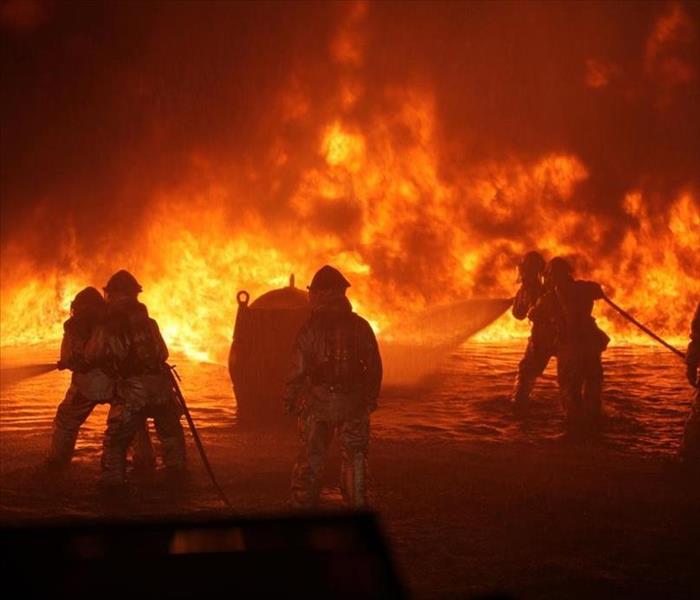 Alberta wildfire rages on
Alberta wildfire rages on
At SERVPRO of Calgary South we have had our fair share of experience with Alberta wildfires. Wildfires are nothing new to Alberta, on average over 1000 wildfires happen each and every year. Wildfires are a natural event and an important step in the life-cycle of our ecosystem. But human intervention has increased the frequency and severity of Alberta wildfires. Most often the flames occur in unpopulated areas and they rarely affect humans in the way Fort McMurray was affected in 2016. In 2018 alone there was almost 1300 wildfires, which is below our 5-year average of around 1400 (this number is skewed slightly by the large influence of 2016). On average humans are responsible for 65% of wildfires, while the remainder is attributed to lightning. Human causes can range from recreational fires, house fires, and the power line industry. Also in 2018, 59,809 Hectares of land was burned. I know the average person (myself included) is unfamiliar with a hectare but that equates to almost 120,000 Canadian Football Fields of land burned. Below are a few resources to help familiarize yourself with wildfire safety.
https://wildfire.alberta.ca
Alberta Wildfire has all the information you need about the current status and location of wildfires and can inform you of local fire bans or burning restrictions.
https://www.canada.ca/en/environment-climate-change/services/air-quality-health-index/use.html
The Government of Canada website uses the Air Quality Health Index to judge the quality of the air we breathe. Even though Canada’s air is constantly ranked one of the cleanest in the world (due to municipal, provincial, and federal governments teaming up to limit emissions) there are still days we the smoke from wildfires can be too much. For example in May 2019, Calgary faced days of 10+ when the average is around a 2.
A few Alberta 2018 Wildfire Facts:
- 97% of all reported wildfires were contained within 24 hours.
- On June 22nd, 2018 113 wildfires were reported in 24 hours.
- Alberta had almost 700 firefighters from other provinces and the US come to our aid.




 24/7 Emergency Service
24/7 Emergency Service








